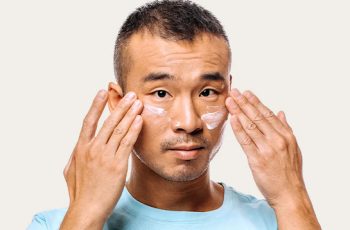
If you regularly use waxing or epilators, you may not have considered how using retinol immediately after hair removal could impact your skin. Retinol, a potent form of Vitamin A, is known for its ability to enhance skin texture, reduce wrinkles, lighten dark spots, and promote collagen production. However, applying retinol to freshly waxed or depilated skin can lead to irritation, redness, or an allergic reaction.
This happens because hair removal, in addition to removing hair follicles, also strips away dead skin cells. In a way, waxing and epilation function as a form of exfoliation, which can make your skin more sensitive. When combined with the potent effects of retinol, this can lead to discomfort, increased sensitivity, and even pain.
Let’s dive deeper into the potential risks and benefits of using retinol post-hair removal, so you can navigate your skincare routine without any unpleasant surprises.
If you’re still not sure about how retinol works and how to incorporate it effectively into your regimen, check out our dedicated blog post for more information.
Can I Use Retinol After Waxing?
It’s generally not recommended to use retinol immediately after waxing. The reason? The skin becomes more sensitive following hair removal, and when combined with retinol, it can cause severe irritation.
As previously mentioned, waxing or epilation involves exfoliating the skin—removing both hair and dead skin cells. This exposes new, fresh skin underneath, which is more vulnerable and sensitive. Even if you’ve been using retinol regularly, this newly exposed skin may be more reactive to it, potentially leading to irritation.
For the best results, it’s advisable to stop using retinol for at least seven days prior to waxing. After hair removal, switch to a soothing serum with hydrating ingredients like hyaluronic acid for the next 72 hours. This will give your skin time to heal and recover, making it more resilient and ready to handle retinol once again.
What Should I Do After Waxing If I Use Retinol?
After waxing, your skin will likely feel slightly rough, and in some cases, it might even experience a mild burn. Proper care is crucial to help your skin recover quickly.
Here are some steps to take after waxing:
Avoid retinol for the next 7 days to prevent further irritation.
Cleanliness is key – ensure your hands, skin, and any equipment used are thoroughly clean before applying any products.
Apply an antibiotic or antibacterial cream to help prevent any potential infection.
Hydrate your skin by using a serum rich in hyaluronic acid for the next three days to support your skin’s natural healing process.
Even if your skin seems to tolerate it well, avoid using strong or harsh skincare formulas.
Wear sunscreen daily with an SPF of 30 or higher, even on cloudy days, to protect the sensitive skin.
Remember, everyone’s skin is different, and some people may react differently to post-waxing care. If you have concerns, it’s always best to consult with a dermatologist or skincare professional.
How Long Should I Wait Before Using Retinol After Hair Removal?
For optimal skin health, it’s recommended to stop using retinol at least 7 days before waxing or other forms of hair removal.
One common misconception about retinol is that it exfoliates the skin, but it actually accelerates skin cell turnover, bringing fresh skin cells to the surface. The problem with using retinol before waxing is that waxing removes a layer of dead skin cells, which typically forms a protective barrier over the fresh skin. Without this layer, your skin becomes more vulnerable to irritation, redness, and potential abrasions.
To avoid these issues, it’s important to give your skin some time to adjust and strengthen its natural barrier before you wax.
Can I Use Retinol Before Laser Hair Removal?
No, it’s best to avoid using retinol before laser hair removal as well. The issues are similar to waxing—retinol speeds up skin cell turnover, and when combined with the laser’s effects, your skin may become too sensitive and fragile.
Laser hair removal works by targeting hair follicles, but the process also impacts the skin’s surface. Fresh skin cells may emerge, but they’re delicate and need time to strengthen before they can resist external aggressors like UV rays and pollution. Retinol can make this process more challenging by compromising the skin’s ability to recover, leading to potential damage such as irritation, pigmentation changes, or signs of premature aging.
To keep your skin safe and support its recovery, avoid using retinol for at least a week before laser treatments.
What Should I Avoid Doing Before Waxing?
If you plan on waxing, there are a few key things to avoid to prevent irritation and ensure a smooth experience:
Avoid tanning 24 to 48 hours before waxing. Whether from sun exposure or tanning beds, tanning increases your skin’s sensitivity, making it more prone to irritation.
Don’t exfoliate for 48 hours prior to waxing. Exfoliating can leave your skin more sensitive and may lead to discomfort during waxing.
Refrain from using makeup or skincare products that could interfere with the wax’s ability to adhere to your skin. These can create a barrier, making waxing less effective.
Stay away from saunas or steam rooms and avoid hot baths, as the heat can irritate the skin.
Do not scratch or rub your skin after waxing, as tempting as it may be. This can increase the risk of infection or irritation.
It’s always a good idea to check with a professional or consult a dermatologist if you have any concerns or if you’re unsure how your skin will react.
Final Thoughts
While retinol offers numerous skin benefits, it’s important to be cautious when using it in conjunction with hair removal methods like waxing or laser treatments. By following the proper precautions, such as stopping retinol use several days before hair removal and allowing your skin to heal afterward, you can ensure the best results without compromising your skin’s health.
If you’re unsure about your specific needs or have any concerns, don’t hesitate to seek advice from a skincare professional or dermatologist.


